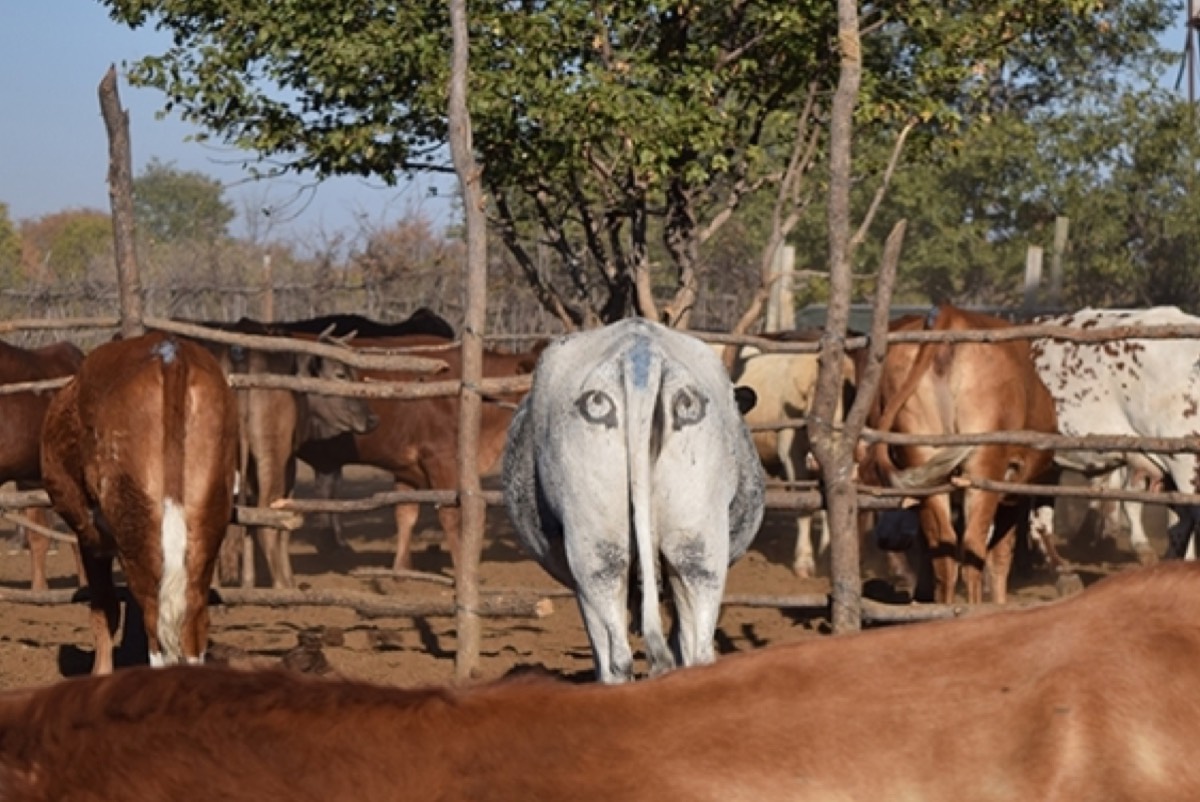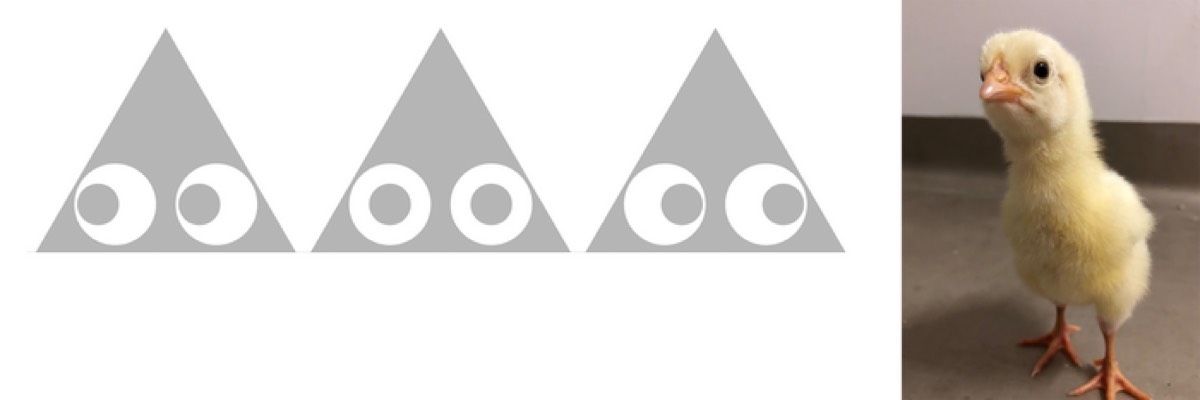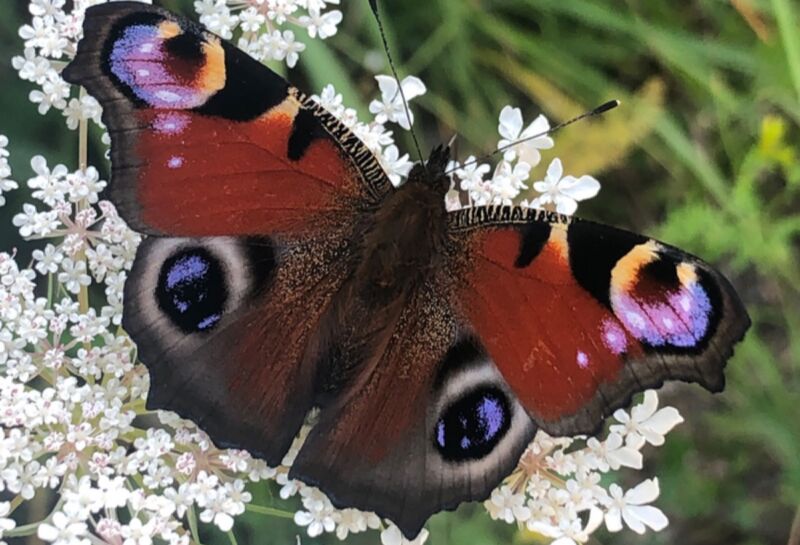Visitors to the Louvre have long reported that the woman in Leonardo da Vinci's most famous painting, the Mona Lisa (aka La Gioconda), has eyes that seem to follow one around the room. A small 2019 study found that this perceptual "Mona Lisa effect" is indeed real—it just doesn't apply to the famous painting. As we reported at the time, she's actually "looking" to the right-hand side of her audience. But that type of effect does seem to play a significant role in the animal kingdom, according to a new paper published in the journal Frontiers in Ecology and Evolution—specifically in warding off potential predators.
"Eyespots with concentric circles seem to stare at potential predators from many directions, just like portraits that seem to maintain eye contact no matter where you are in the room," said co-author Hannah Rowland, who heads an independent research group on predators and toxic prey at the Max Planck Institute for Chemical Ecology in Jena, Germany. "This probably also explains why, in nature, eyespots have evolved independently in different animals to successfully deter enemies."
Since the 1960s, perceptual psychologists have known that we're very good at sensing when someone is looking at us. That includes the eerie sensation of being watched by the subjects of paintings or photographs, which typically occurs when the subject is looking straight ahead out of the image, at an angle between 0 and 5 degrees. There are also multiple species of fish, butterflies, moths, beetles, and praying mantids that boast circular markings on their bodies that look a lot like eyes—hence they're often called "eyespots." It's believed that these eyespots deflect the attention of predators to non-vital body parts, and/or intimidate or ward off attacks entirely, and there is scientific evidence that this is indeed the case.
For instance, back in 2020, we reported on the "Eye-Cow Project," which encouraged farmers in Botswana to paint eyes on the butts of cattle to trick ambush predators like lions into thinking they've been spotted by their intended prey. Cattle herds in the Okavango delta region are plagued by attacks by lions and other predators, prompting farmers to retaliate by killing the predators. Neil Jordan, a conservation biologist at the University of New South Wales in Australia, wanted a non-lethal alternative and came up with the "Eye-Cow" idea.
Jordan knew that butterfly wings sporting eye-like patterns are known to ward off preying birds and are also found in certain fish, mollusks, amphibians, and birds, although such patterns had not been observed in mammals. So he decided to test his "detection hypothesis" that painting eyes on the butts of cows would discourage predatory behavior from the local lion population. Silly as it may sound, the results confirmed that cattle with the painted eyes on their rumps were significantly more likely to survive than those that weren't painted at all.

But is this really a case of potential predators mistaking eyespots for the eyes of animals that would prey upon them in turn (i.e., a bona fide Mona Lisa effect)? Or does the deterrence arise from any conspicuous patterns or bright colors—like the red-and-black patterns of ladybirds—regardless of whether they resemble eyes or not? Rowland and her co-author, John Skelhorn of Newcastle University, decided to put the competing hypotheses to the test with a series of experiments involving newly hatched chicks hunting for moths. They thought, if the former were correct, it was likely that both the configuration of the eyespots and the direction in which a predator approached its prey would impact the efficiency of the deterrence.
The researchers acquired 126 domestic chicks from a commercial hatchery and ran the chicks through several training trials to teach them how to attack their prey. For the "prey," Rowland and Skelhorn created three different versions of artificial moths: one version with eyes with middle circles ("eyes") looking to the left; a second with eyes where the middle circles looked to the right; and a third with perfectly concentric circles that recreated the Mona Lisa effect—seeming to gaze straight forward or to one of the two sides.
They also built three little mini-runways, or "chickwalks," so the chicks strutting their stuff would approach the prey either in a straight line or from the left or right side. The chicks were randomly assigned to one of three groups, each of which used one of the three chickwalks. A single artificial prey was pinned to the center of the wall at the end of the chickwalks. Then they timed how long it took for each chick to approach and attack the artificial prey.

The results seemed pretty unambiguous. "The chicks approached more cautiously from the left when the eyespots appeared to look to the left," said Skelhorn. "Chicks approaching from the right showed similar caution when the eyespots were shifted to the right. However, when the chicks approached the artificial eyes from the opposite direction, they attacked the artificial moth quickly and ate the mealworm. Chicks approached moths with concentric circular eyes from all directions only with great caution."
That's consistent with the duo's hypothesis that chicks perceived the artificial eyespots as eyes, and that eyespots deter predators most effectively when they seem to "gaze" at those predators, like the artificial moths with concentric circles. There are the usual caveats, but on the whole, "Our results clearly demonstrate that eyespot design and predator approach direction can influence the anti-predator benefits of eyespots," the authors concluded.
DOI: Frontiers in Ecology and Evolution, 2022. 10.3389/fevo.2022.951967 (About DOIs).



3175x175(CURRENT).thumb.jpg.b05acc060982b36f5891ba728e6d953c.jpg)



Recommended Comments
There are no comments to display.
Join the conversation
You can post now and register later. If you have an account, sign in now to post with your account.
Note: Your post will require moderator approval before it will be visible.